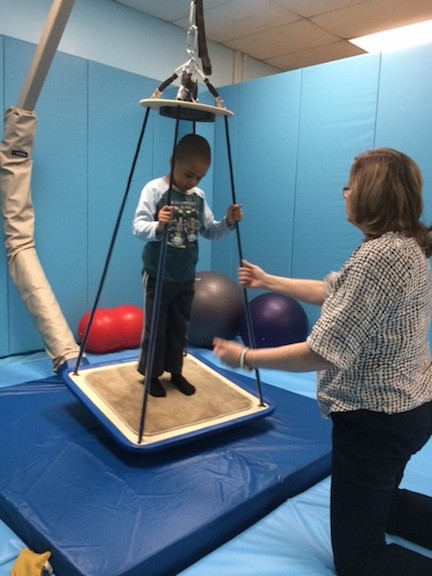Training the senses for optimal learning
Part 3 in a series
From the outside, the room is discreet. Tucked into a corner where two wings meet at the Forest Road School, behind beige walls, is District 30’s new sensory gym, a space for students with various physical issues, from disabilities to hyperactivity.
Special education staff members work hard to help students overcome various learning disabilities, and that often means making sure children are physically able to learn. Several students in regular classroom settings also need support. Much of that work occurs in the sensory gym, filled with equipment that helps children develop and refine their motor skills.
What was once a science room full of small animals has been repurposed to help a growing population of students with physical needs. Nicole Schimpf, the director of special services, noted that many students with severe disabilities are now being educated in District 30’s own schools, rather than in specialized educational facilities. The needs of those students must be accommodated and Forest Road houses many of the district’s special education classes.
In addition, there are some students in the general education setting that can benefit from physical or occupational therapy, the two programs that use the sensory gym.
Anna Nasci, an occupational therapist who works with the district from New York Therapy, said there are all sorts of factors that prevent children from focusing and learning. Some are neurological, which have to be diagnosed by doctors. Others are physical, which she and her colleague, Patricia Butt, deal with.
Nasci explained that some children have sensory issues, meaning they either struggle to process what they see, or are unaware of their body in space. The latter, she explained, often results in a child moving around too much or excessively bumping into stationary objects.
Occupational therapists, using a variety of tools, can have children do specific movements that train their bodies. Nasci said it is important to build a child’s core strength, which can help them maintain an upright posture in class. “If you have to shift around a lot, that can make your attention weaker,” she said, “and that impedes the learning process.”






